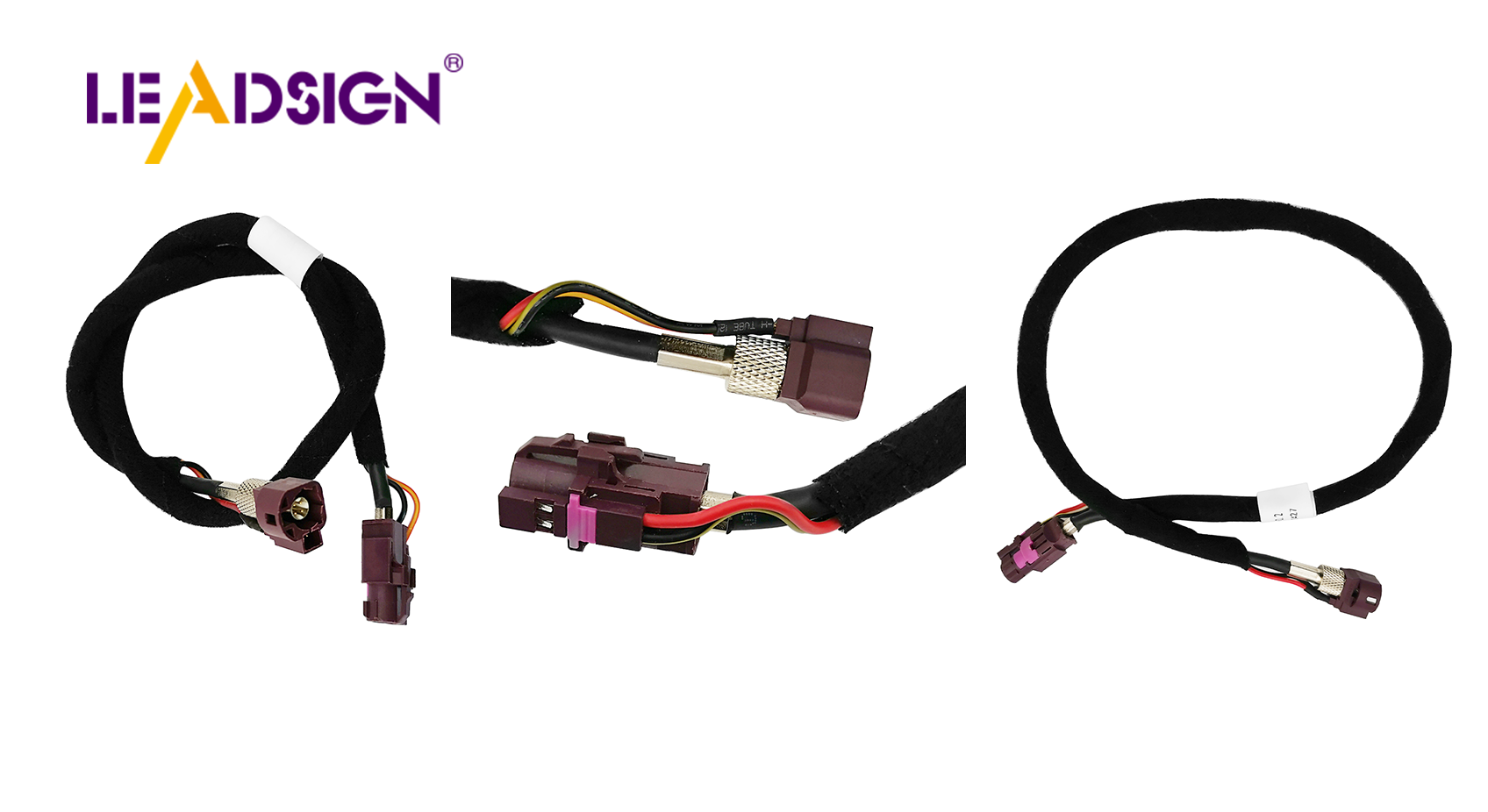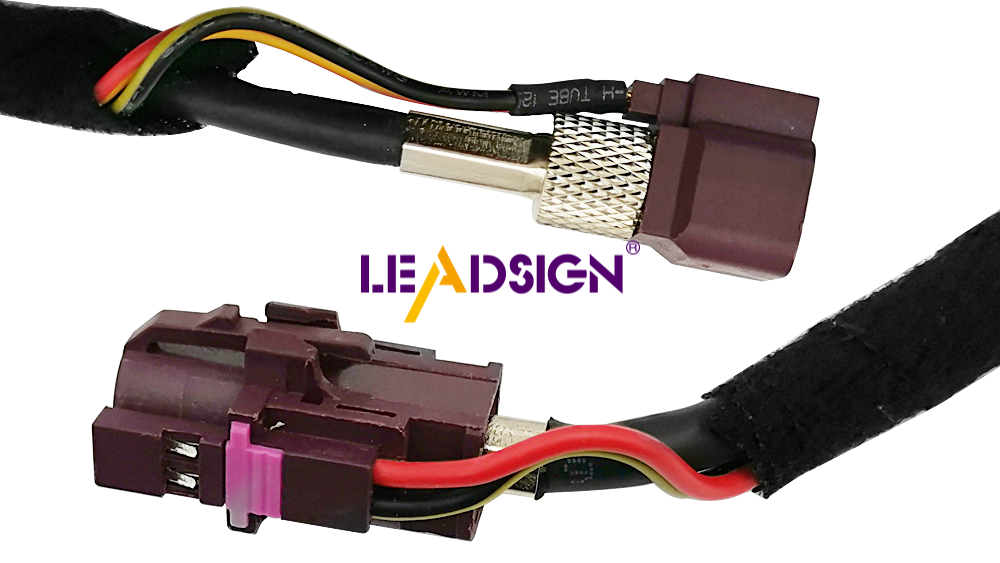Why automotive wiring harness connectors and terminals are indispensable in 2025

Auto harness connectors are very important in cars today. They help control the electrical systems in EV batteries and motors. These connectors also send data quickly for features like ADAS and V2X. Their simple designs make fixing and upgrading easier. This keeps cars efficient and ready for new tech.
Key Takeaways
Car connectors are key for running new tech like self-driving and ADAS. They help send data quickly, which modern cars need.
Picking good connectors means checking if they resist weather and stay strong. This keeps your car's wiring safe and working well.
Good connectors boost power flow and make fixing easier. They cut costs and time by lasting longer without needing changes.
Understanding Auto Harness Connectors and Terminals
What Are They?
Auto harness connectors and terminals are very important in cars. They help the car's electrical system work smoothly by sending power and data. These connectors join different parts of the car, like sensors and safety systems, into one network. Without them, features like maps or crash alerts wouldn’t work.
Think of them as bridges that link electrical circuits. They let parts inside the car, like radios, talk to each other. They also connect the car to tools for fixing problems. Plus, they make it easy to swap broken parts, so the car keeps running during repairs.
Key Components and Their Role in Vehicles
Auto harness connectors have several main parts, each with a job:
Connectors: These join wires to power sources and circuits. They have male and female ends to fit together correctly.
Connector Housing: This holds the terminals and pins, keeping out dust and water. It also shows if the connector is sealed or not.
Terminal Position Assurance (TPA): This makes sure terminals are in the right spot. A click sound means it’s secure.
Connector Position Assurance (CPA): This protects connections from things like dirt and moisture.
Single Wire Seal: Made with special oil, it shields single wires from bad weather.
Block Seals: These protect groups of wires and keep them in place.
Cavity Plug: This covers empty spaces to block dirt and water.
These parts work together to keep the car’s electrical system strong. They make sure connections are safe, protect against damage, and support high-tech features in the car.
Types of Wire Harness Connectors and Terminals

Plug and Socket Connectors
Plug and socket connectors are very important in cars. They let devices get power from an electrical circuit. The plug connects to the device, and the socket stays in place. This setup keeps the connection strong for smooth electricity flow. For example, they power things like radios or GPS systems in cars. These connectors are made for direct power delivery, making them very reliable.
Ring and Spade Terminals
Ring and spade terminals are common because they are easy to use. They come in different sizes to fit various wires. These terminals keep connections safe and stop short circuits. They also help organize wires, making repairs easier. They can handle high power, so they’re great for batteries or alternators. With these terminals, fixing problems is quicker, and wires stay tidy.
Quick Connect/Disconnect Systems
Quick connect/disconnect systems make car repairs and assembly faster. You can connect or remove parts with a simple push or twist. This saves time and avoids tricky alignment steps. They also improve safety and help cars use fuel better. Their smart designs stop leaks and keep connections secure. That’s why they’re popular in modern car wiring systems.
Why Auto Harness Connectors Matter in 2025
Helping Advanced Car Technologies
Auto harness connectors power the smart systems in today’s cars. They help features like self-driving and connected cars work properly. These connectors let sensors, cameras, and controls share information smoothly. Without them, fast data transfer for these systems wouldn’t happen.
ADAS uses these connectors to send signals quickly and correctly.
Self-driving cars rely on them to link parts inside and outside.
Smart wiring systems handle the extra data modern cars need.
These connectors help cars process information instantly, improving how they work.
Improving Safety and Strength
Safety is very important in cars, and these connectors keep connections secure. They are built to survive tough conditions like heat and shaking.
Low resistance and high power ensure signals stay accurate.
Strong designs stop wires from disconnecting due to wear or stress.
Seals and locks block dirt and water, keeping connections safe.
By staying stable, these connectors help systems like brakes and airbags protect you.
Boosting Efficiency and Being Eco-Friendly
Wire harness connectors make cars lighter and more fuel-efficient. Their small size and light weight reduce the car’s overall weight.
Modular designs make upgrades easy, avoiding full replacements.
Simple production methods cut waste and save on labor costs.
Recycled materials lower harm to the environment.
These features make cars greener and cheaper to build. With these connectors, cars become efficient and better for the planet.
Choosing the Right Wire Harness Connectors
Factors to Consider
Picking the right wire harness connectors needs careful planning. They must handle your car’s electrical needs and stay strong. Here are some important things to think about:
Environmental Resistance: Pick connectors that can handle heat, cold, and moisture. Make sure they have seals and IP ratings to block dust and water.
Mechanical Strength: Connectors should survive shaking and movement, especially in big vehicles. Strain relief stops wires from bending or breaking over time.
Locking Mechanisms: Strong locks are important to keep connections secure. Choose connectors with good locking systems to avoid them coming loose.
Electrical Specifications: Check if the connectors can handle the needed power and voltage. Low resistance helps signals stay clear and efficient.
Termination Methods: Look at how connectors attach to wires. Crimping, soldering, or screw-on types each make assembly easier and keep signals strong.
By thinking about these points, your car’s wiring will work well in any situation.
Importance of Material and Design Quality
The materials and design of connectors affect how well they work. Good materials like gold or silver coatings lower resistance and improve power flow. Plastic connectors are light and tough, while metal ones work best for heavy jobs.
Design is also very important. Strong locks keep connections tight, even with shaking. Strain relief stops wires from getting damaged. Testing makes sure connectors can handle bumps, vibrations, and tough weather.
When you pick good materials and designs, your wire harness lasts longer. This saves money on repairs and makes your car’s electrical system more reliable.
Benefits of High-Quality Auto Harness Connectors
Better Electrical Performance
Good connectors help your car’s electrical systems work well. They make sure important systems, like safety tools and screens, run smoothly. These connectors let electricity flow easily, wasting less energy. They can handle high power, which is needed for electric and hybrid cars.
Modern cars need to send data quickly. Strong connectors allow fast data sharing for features like ADAS and EV charging. They also support more wires and connections, which are needed for complex systems. Using these connectors keeps your car working well, even in tough situations.
Easier Installation and Repairs
High-quality connectors make fixing or upgrading your car faster. Their simple designs are easy to use, so mistakes happen less often. Quick-connect features let you attach or remove parts easily. This saves time, which is helpful for people who use their cars daily.
These connectors also keep wires neat, making problems easier to find and fix. Strong locks and fewer alignment issues mean connections stay secure. This saves time and lowers repair costs during maintenance.
Stronger and Cheaper Over Time
Tough connectors last longer and save money in the long run. They can handle heat, shaking, and wet conditions without breaking. This means you won’t need to replace them often, which saves money.
Feature | Starting Cost | |
|---|---|---|
Medium | High | |
Less Fuel Waste | Low | Big |
Better Reliability | Medium | High |
Reliable connectors stop big problems that cost a lot to fix. For car makers, easy repairs mean faster fixes and better car performance. Choosing strong connectors means fewer problems and more savings over time.
Future Trends in Wire Harness Connectors
Smaller and Smarter Designs
Cars today need smaller, smarter connectors to fit tight spaces. Miniaturization is changing how car wiring works. Designers now make tiny connectors that save space but still work well.
Small connectors fit in cars with less room inside.
Light materials help make cars weigh less overall.
Fast data transfer is now a must-have feature.
These small designs save space and make systems work better. They let more parts fit together, keeping cars modern and high-performing.
Smart Connectors for Better Features
Smart connectors are changing how cars work. They send data fast and allow real-time updates. This helps with features like remote controls and safety systems.
Smart connectors fit more parts into small spaces. They also use eco-friendly materials, helping the planet. Cars with these connectors work better and are greener too.
Eco-Friendly Materials for a Cleaner Future
Car makers now use recycled plastics and green metals for connectors. These materials are better for the environment but still work well.
Factories are also saving energy and cutting waste. This helps make cars smarter and kinder to the planet. The future of cars is both high-tech and eco-friendly.
Car wiring harness connectors and terminals are crucial for vehicles in 2025. They help new technologies work, make cars safer, and boost performance. The market for these connectors is expected to grow a lot, reaching $121.3 billion by 2033. As cars use more electric systems and smart features, the need for dependable connectors will keep increasing.
FAQ
What makes automotive connectors reliable?
Automotive connectors are made from strong, long-lasting materials. They have secure locks to keep connections tight and safe. These features protect them from heat, water, and shaking.
How do connectors support signal transmission in vehicles?
Connectors link sensors, cameras, and controls to share signals. This helps data move quickly and correctly for smart car systems.
Can you replace damaged connectors easily?
Yes, many connectors are designed to be easy to use. Quick-connect systems let you fix or swap them without special tools. This saves both time and effort.
See Also
Why HSD Connectors Matter in Today's Automotive Sector
Key Benefits of HFM Connectors for Automotive Applications
Understanding HSD Connectors: A Guide for Automotive Use

